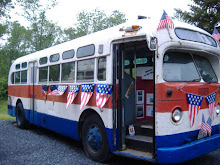
The Shoe House built in 1948, was by far Haines' most outlandish advertising gimmick. The building, modeled after a high-topped work shoe, is a wood frame structure covered with wire lath and coated with a cement stucco. It measures 48 feet in length, 17 feet in width at the widest part and 25 feet in height. The interior consists of five different levels and contains three bedrooms, two baths, a kitchen and living room. The shoe motif is everywhere--from the design of the stained glass windows to the shoe-shaped dog house and the decoration on the wooden fence that surrounds the property. In the ultimate homage to the shoe and the wizard, the door to the main entrance bears a portrait in stained glass of Haines himself displaying a pair of shoes! This giant structural advertisement was originally used as a guest house.

























